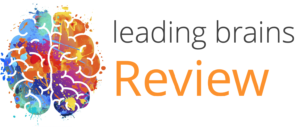No Results Found
The page you requested could not be found. Try refining your search, or use the navigation above to locate the post.


This study recently out analyses a fascinating episode in China at the start of the pandemic.
A group of international musicians in Shenzhen produced a viral hit in China. This was a cover version of Michael Jackson’s “you are not alone” this was particularly suitable because it focused on multiple aspects of distress that the population was going through such as encouragement, empathy, but also positivity, and hope.
This was posted on the Chinese social media service WeChat, which has 1.2 billion users, and became a viral hit but also a source of encouragement and collective mourning for millions and millions of Chinese.
Lydia Giménez-Llort, professor of the Department of Psychiatry and Forensic Medicine and researcher at the INC-UAB researched and analyzed how this impacted the population. What she found was that this particular music, and indicating suitable music in general, was very helpful in helping the population process their collective grief and shock at the start of the pandemic when millions of people were in a collective strict lockdown in China.
She also found that’s the music helped to guide people through grief stages such as that proposed by Kübler Ross when people go through different phases of grief or that by Taylor of “tend and befriend”. What is also noticeable in this particular example is that the musicians were international musicians and the song itself was an international song suggesting that it is the music itself and the message that is in the music that is most effective.
This goes some way to explain why us human beings are naturally drawn to music in times of grief, but it also highlights how this is an important part of the healing process and something that combined collectives and society can benefit from and so it is not to be underestimated.
Some people do claim that music is a basic need and though this doesn’t prove it, it does show that music is very important in our lives and can do many things much more important than just “entertainment”.

Andy is author of leading brains Review, Neuroleadership, and multiple other books. He has been intensively involved in writing and research into neuroleadership and is considered one of Europe’s leading experts. He is also a well-known public speaker speaking on the brain and human behaviour.
Andy is also a masters athlete (middle distance running) and competes regularly at international competitions (and holds a few national records in his age category).
Lydia Giménez-Llort
‘You’re Not Alone for China’: The First Song in Times of COVID-19 to Keep the Faith in a World Crying in Silence.
Behavioral Sciences, 2022; 12 (4): 88
DOI: 10.3390/bs12040088
The page you requested could not be found. Try refining your search, or use the navigation above to locate the post.


Business and executives in those businesses are more than keen to get a competitive advantage. To this end they invest heavily in technology and getting the right people to do the job.
But, I am sure, we are all more than aware that the work environment is also crucial to high performance. And this study, just out, gives an interesting take from a large dataset on this. The researchers around Alexander McKay at Virginia Commonwealth University analysed data from 11,000 surveys of employees sharing everyday work experiences and rated these into factors that stimulate or inhibit creativity. Creativity being a key metric to getting a competitive advantage for businesses.
Analysing the data showed that they could categorise the types of days that employees had into five categories:
So, in a hypothetical week, employees are in a bad place for half a day, disengaged for another half, in typical work mode for 1.5 days, in optimal work mode for 1.5 days, and spend 1 day in crises mode.
The next question is are these positive days actually better for creativity?
And this was a resounding yes. Those days which are ideal days rated much higher on creativity output but they also note that workers’ perceived creativity and productivity may actually be mismatched. The data for example shows that crises days are not as creative as workers rate them. Another note is that these days don’t average out as I did above nicely mixed up over a week. They tend to occur concurrently, so a toxic day is more likely to follow another toxic day. This can increase stress significantly – this shows that there can be a tendency to get in a rut – a positive one, or a negative one.
This also means it is important to try to manage this proactively.
This is therefore another piece of impressive and solid evidence as to why helping workers to have a good day at work will reap dividends for any business.
So what’s stopping you or your business making this happen?

Andy is author of leading brains Review, Neuroleadership, and multiple other books. He has been intensively involved in writing and research into neuroleadership and is considered one of Europe’s leading experts. He is also a well-known public speaker speaking on the brain and human behaviour.
Andy is also a masters athlete (middle distance running) and competes regularly at international competitions (and holds a few national records in his age category).
Alexander S. McKay, Mayoor Mohan, Christopher S. Reina.
Another day, another chance: Daily workplace experiences and their impact on creativity.
Journal of Product Innovation Management, 2021; 39 (3): 292
DOI: 10.1111/jpim.12573
The page you requested could not be found. Try refining your search, or use the navigation above to locate the post.

Quick Hits
Daily brief research updates from the cognitive sciences

Who wouldn’t want to keep their memory when aging?!
Well, researchers have just announced some promising results in mice enabling them to keep their memories and avoid some of nasty neuro-degenerative aspects of Alzheimer’s.
What did they discover?
If you read the research and the press release, it gets technical and complicated very quickly, so let me translate this for you:
During aging we have more oxidative stress and accumulated stress over our lifetimes, this leads to various proteins, notably one called beta amyloid, building up in the brain. These clumps are resistant to removal and so end up continuing to build up over time contributing to multiple factors and particular impairing memory but in general decreased cognitive function.
The researchers around Adam Smith at the University of Kansas processed a protein from corn in the lab to produce an antigen which helps the immune system to clear out these clumped proteins in the brain. This is effectively a vaccination — mice injected with this showed greater short-term memory on lab tests (such as the clichéd maze tasks) but also on long-term memory. The markers for inflammation in the brain were also lower in blood samples.
The obvious question is would this translate to human beings? Because of the nature of the mechanism which is similar in human beings the researchers think it would but, obviously, this will need more research. But nevertheless very, very promising.
I’m waiting…

Andy is author of leading brains Review, Neuroleadership, and multiple other books. He has been intensively involved in writing and research into neuroleadership and is considered one of Europe’s leading experts. He is also a well-known public speaker speaking on the brain and human behaviour.
Andy is also a masters athlete (middle distance running) and competes regularly at international competitions (and holds a few national records in his age category).
Adam S. Smith, Kyle R. Gossman, Benjamin Dykstra, Fei Philip Gao, Jackob Moskovitz.
Protective Effects against the Development of Alzheimer’s Disease in an Animal Model through Active Immunization with Methionine-Sulfoxide Rich Protein Antigen.
Antioxidants, 2022; 11 (4): 775
DOI: 10.3390/antiox11040775
The page you requested could not be found. Try refining your search, or use the navigation above to locate the post.

Quick Hits
Daily brief research updates from the cognitive sciences

Having more children and late life cognition is not something that is generally researched. There are more obvious avenues such as diet, education, exercise, or socio-economic factors. That’s also why this recently published study caught my attention.
So, (to put it bluntly) can having more children make you stupider in your old age?
It seems so, but first let’s understand the limitations and why this could be the case.
First, this study, out of Columbia, analysed data from the Survey of Health, Aging and Retirement in Europe (SHARE) to look at the extent to which having three or more children, versus two children, affects late-life cognition. SHARE collects representative data from 20 European countries and in this case they were over 65 and had at least two biological children.
So, what did they find – well, yes, as I said they found that having three or more children, compared to two, reduced cognitive ability in later life – this was equivalent to 6.2 years of aging. That is a pretty large effect. Of note is that they crunched the numbers to indicate causation rather than correlation.
This effect was worst in northern European countries likely because in these countries having more children does not confer any additional resources or benefits.
What do they consider the reason for this:
Of note is that it seems that there is no additional social benefit from having three or more children over two – social contact does not increase. These effects were much larger in the North of Europe than the South for multiple reasons such as cost of living and social structures.
The study didn’t explore other variations such as comparison to having only one child or none – they recommend this for future studies. It is also important to have this knowledge with people living ever longer and late life health and cognitive functioning becoming ever more important.
So, all in two children is enough – and that is exactly what I have. Phew!

Andy is author of leading brains Review, Neuroleadership, and multiple other books. He has been intensively involved in writing and research into neuroleadership and is considered one of Europe’s leading experts. He is also a well-known public speaker speaking on the brain and human behaviour.
Andy is also a masters athlete (middle distance running) and competes regularly at international competitions (and holds a few national records in his age category).
Eric Bonsang, Vegard Skirbekk.
Does Childbearing Affect Cognitive Health in Later Life? Evidence From an Instrumental Variable Approach.
Demography, 2022
DOI: 10.1215/00703370-9930490
The page you requested could not be found. Try refining your search, or use the navigation above to locate the post.

. . .
This content is only for Premium Brains - please subscribe to access this. All subscriptions come with a free trial.
Register for free to receive access to "Healthy Brains" and other selected articles.
Subscribe to Premium Brain (monthly or annual) to access all articles and access the download page.
Subscribe now
